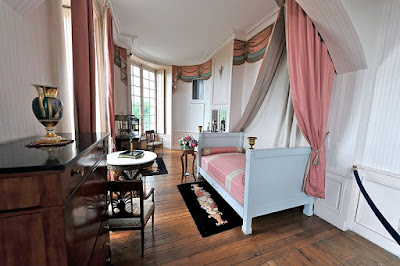I have just turned 43 and more than ever, I discover that as a writer, nothing is more regrettable than two activities.
One: revealing myself when my natural tendency is to opt for secrecy. I would choose evasiveness any time rather than divulge what I am writing or researching. In the past I always felt compelled to say something, describe anything, so as to justify the long writing silences and offer meaning for the months spent in incubation with nothing to show. I would share and share to prove that there was an idea being hatched, that I was authentic and that it was all true and there existed a work in progress. But I won't do that anymore. I don't need to prove myself.
My work is something I would rather not reveal until complete. Either way, when I shared a little in the past, I always sensed a lack of a connection with others about what I was trying to describe. Unless they actually ended up reading the entire completed book, it gave me an uneasy feeling that they had understood nothing.
My work is something I would rather not reveal until complete. Either way, when I shared a little in the past, I always sensed a lack of a connection with others about what I was trying to describe. Unless they actually ended up reading the entire completed book, it gave me an uneasy feeling that they had understood nothing.
Nothing gives me less satisfaction than people knowing what I am up to when they don't really understand it. To make matters worse, given I am likely to remain purposefully enigmatic about the work in progress, then there is no point in speaking much of anything until the deed is done.
Otherwise it is a waste of time. Which brings me to...
Two: spending time writing long emails, articles, marketing posts or any other self-promoting posts when I would rather be researching and writing; there is nothing wrong with author marketing and I respect it when it makes sense, but if it takes away from my current work in progress, especially when I am so limited in time, then I resent it.
I feel reluctant to spend that precious commodity, time - there is enough piracy and unfair treatment of writers as it is without compounding the problem. Do you understand? I don't want to write for free unless I am aiding other writers by composing a review of their work. Our books are already cheapened every year as it is.
I also feel indignant about being a person that I am not. I loathe the reputation that writers have acquired on Twitter or any other social platform - that of being self-promoting, constantly blasting others with posts about their work. It saddens me that it has come to this when in fact writers are the least likely to be self-promoting by default. Many writers chose that medium because they are introverts in the first place and don't enjoy the limelight. Yes, it is annoying to see writers continually rant about their books. Even I am annoyed by it, though I understand it. It doesn't come to mind to non-writers that we have no choice. If we remain quiet, we will not be read. Even those who are traditionally published are called to do their part in marketing.
Why do writers have to promote themselves so much? You see, the nature of our medium works against us. To illustrate this, I will say, that today, especially today, the public is slow to take up a book from an unknown writer. A couple of readers might give you a chance but for this, they will need to accommodate you, squeeze you in between the known writers they adulate, make time for you. Time is crucial for readers. Why would they read you when they can read Dickens, Hugo, King. I am guilty of the same. I would drop any unknown writer to spend time with Wilkie Collins. But now a different medium like visual arts has an advantage. An unknown person can post a photo on Instagram and it will be seen by thousands because the eye cannot but see. Visual artists have an advantage because the mode of consumption for their work is instant. You cannot read, let alone comprehend, a 300 page book in the flash of a second, but you can effortlessly consume countless images in a matter of minutes. Hence why writers try to grab your attention.
Anyway it has come to this. I don't want to be the self-promoting writer even if I will not judge others who choose to engage in marketing. But don't worry, I am not contrived. If I have something exciting to share, I will share it.
Since 2010, I have enjoyed posting in this blog - it was fabulous when there was time, but 2019 is going to prove demanding in so many areas of my life that I have no choice but to say goodbye...for now.
This is not the death of this blog. Or maybe it is...
Perhaps I'll start a new one. After all, this was the second blog after Les Nuits Masquées which I held since 2007. I can't believe that I have been blogging for 11 years.
Perhaps I'll start a new one. After all, this was the second blog after Les Nuits Masquées which I held since 2007. I can't believe that I have been blogging for 11 years.
























